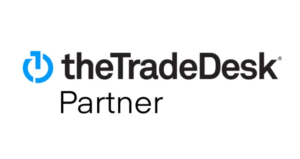Introduction
Founded in 2012 and headquartered in New York, an industry-disrupting digital-first company introduced a new subscription model that has become a game-changer in the consumer electronics space. Fast forward 10 years, and now with $1.8 Million in ad spends more than 2.3 million active subscriptions, tracking has become increasingly complicated due to privacy-first policies, and ad waste has become a significant issue for the brand, like many others. They also faced challenges with overspending in the wrong marketing channels due to poor measurement techniques. They sought a comprehensive solution with Lifesight that would not only eliminate waste but optimize future budget allocations.
The Challenge
- Ad Waste: The primary challenge was the significant waste incurred in ad spend across multiple channels specially Facebook. The lack of precise tracking methods led to a misallocation of resources.
- Inadequate Measurement: Traditional tracking and analytics tools could not offer the insights needed for intelligent budget allocation.
- Budget Optimization: The brand needed a predictive solution to foresee the impact of different budget allocations on various marketing channels.
They wanted to consistently check how much it costs to get new customers from different places like Meta, Google, email, and Amazon. Also wanted to see how things like press releases and news snippets affect the business.
The Solution
Step-by-Step Implementation
- Model Training: The first step was to create a model in the MMM platform.. This initiated the model training process, leveraging the brand’s historical data.
- Model Results: After the training phase, the ML model presented predictive outcomes based on the brand’s historical marketing activities.
- Budget Optimization: Using the budget optimizer tool within the MMM platform, the brand could allocate resources more intelligently across various channels, based on the predictive insights provided by the model.
- Identifies Performance Drivers: It distinguishes between internal factors like advertising strategies, media choices, and promotional activities, and external influences such as pricing fluctuations, seasonal variations, and prevailing trends.
Key Results
- Reduced Ad Waste: The first step was to create a model in the MMM platform.. This initiated the model training process, leveraging the brand’s historical data.
- Improved Budget Allocation: Overall subscriptions boosted by 34% through smart budget distribution, informed by the results of the MMM analysis.They could strategically raise spending in important media channels to grow subscriptions, as highlighted by the MMM analysis.
- Data-Driven Decisions: The insights derived from the MMM allowed the marketing team to make more informed, data-driven decisions, elevating the brand’s overall marketing strategy.
Conclusion
Good measurement helps in making smart choices. By clearly understanding how each part of the advertising is helping the business, the brand could see what really works.
By using Marketing Mix Modeling (MMM), it not only saved on ad budgets but also made its advertising work better. For any brand that mostly works online and wants to use its advertising money smartly, MMM is an indispensable tool.
















































